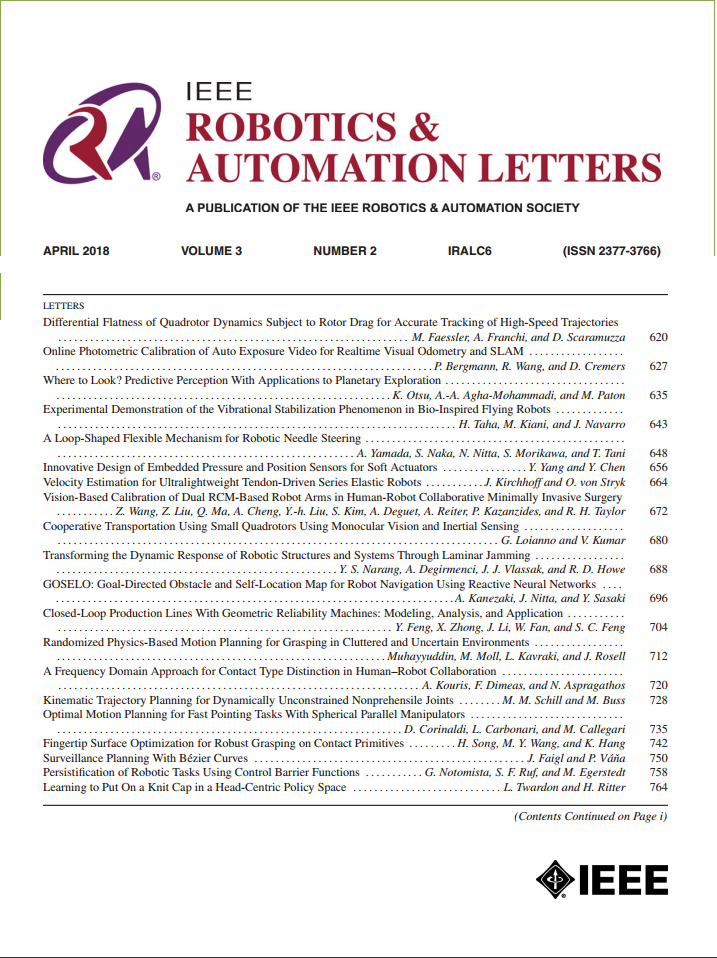SLC$^{2}$-SLAM: Semantic-Guided Loop Closure Using Shared Latent Code for NeRF SLAM
IF 4.6
2区 计算机科学
Q2 ROBOTICS
引用次数: 0
Abstract
Targeting the notorious cumulative drift errors in NeRF SLAM, we propose a Semantic-guided Loop Closure using Shared Latent Code, dubbed SLCSLC$^{2}$-SLAM:使用NeRF SLAM共享潜在代码的语义引导循环闭包
针对 NeRF SLAM 中臭名昭著的累积漂移误差,我们提出了一种使用共享潜码的语义引导环路闭合(Semantic-guided Loop Closure)方法,称为 SLC$^{2}$-SLAM。我们认为,许多 NeRF SLAM 系统中存储的潜码并没有得到充分利用,因为它们只是用于更好地重建。在这封信中,我们提出了一种简单而有效的方法,利用相同的潜码作为局部特征来检测潜在的环路。为了进一步提高环路检测性能,我们使用了语义信息,这些信息也是从相同的潜码中解码出来的,用于指导局部特征的聚合。最后,在检测到潜在环路后,我们通过图优化将其关闭,然后进行捆绑调整,以完善估计姿势和重建场景。为了评估 SLC$^{2}$-SLAM 的性能,我们在 Replica 和 ScanNet 数据集上进行了大量实验。我们提出的以语义为导向的环路闭合大大优于预先训练的 NetVLAD 和结合词袋的 ORB,所有其他带有环路闭合的 NeRF SLAM 都使用了这两种方法。因此,我们的 SLC$^{2}$-SLAM 也表现出了更好的跟踪和重建性能,尤其是在 ScanNet 等具有更多回路的大型场景中。
本文章由计算机程序翻译,如有差异,请以英文原文为准。
求助全文
约1分钟内获得全文
求助全文
来源期刊

IEEE Robotics and Automation Letters
Computer Science-Computer Science Applications
CiteScore
9.60
自引率
15.40%
发文量
1428
期刊介绍:
The scope of this journal is to publish peer-reviewed articles that provide a timely and concise account of innovative research ideas and application results, reporting significant theoretical findings and application case studies in areas of robotics and automation.
 求助内容:
求助内容: 应助结果提醒方式:
应助结果提醒方式:


